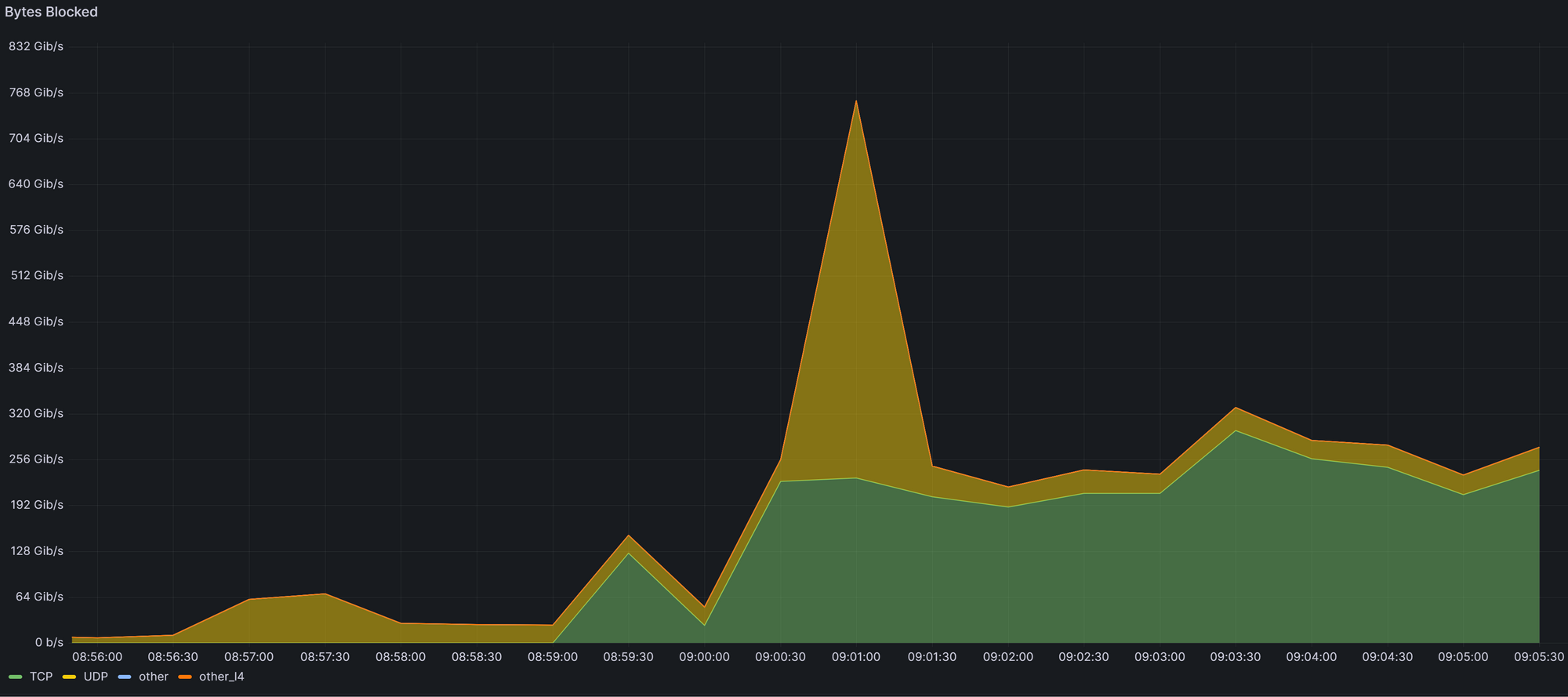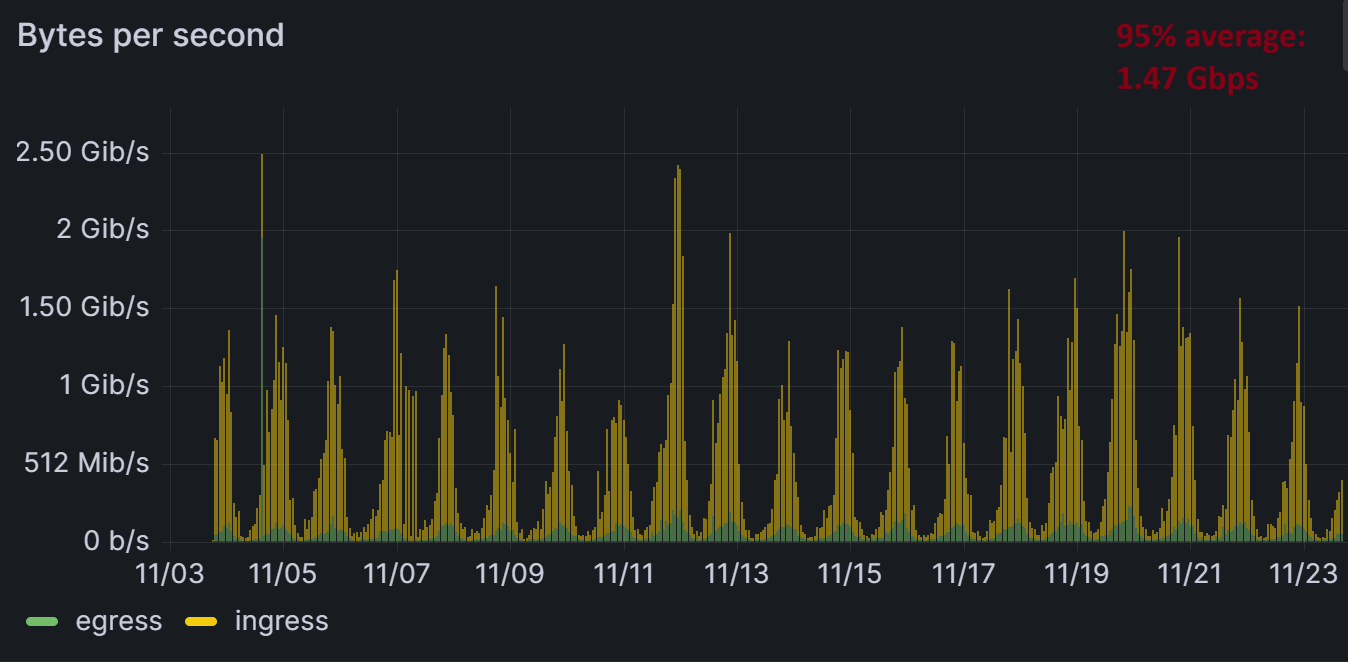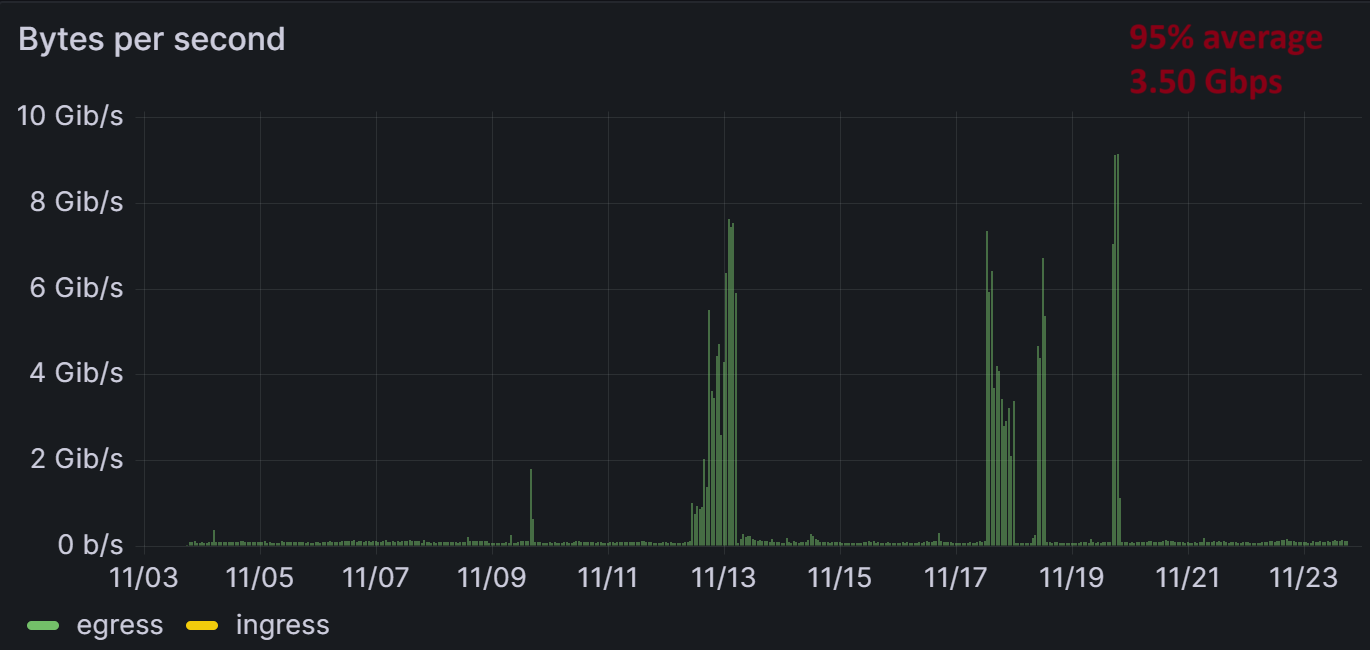
Managing the Bandwidth Capacity of Your Network: The 95th Percentile Unveiled
Many new customers often struggle to understand the concept and implementation of 95th percentile bandwidth metering and billing, leading to a significant amount of confusion. Successfully navigating the constantly changing currents of network bandwidth is a significant challenge. Unlike a calm and predictable river of data, traffic surges, and lulls in unpredictable bursts. This dynamic ebb and flow presents a multitude of challenges when it comes to accurately measuring, planning, and optimizing performance. While analyzing peak and average data can provide some valuable insights, it only presents a partial and narrow view of the larger picture. Here, we introduce the concept of the “95th percentile” in bandwidth metering. This approach cuts through the noise and provides a more accurate and comprehensive understanding of your network’s capacity.
Unraveling the 95th Percentile: Beyond Averages
Think of it as a guiding light in the constantly shifting landscape of data flows. To truly unravel the 95th percentile, we must move beyond focusing solely on averages. Originating from burstable billing practices by ISPs and mobile networks, it’s a method rooted in efficiency. Imagine having a dataset of 100 data points, and by discarding the top 5%, we are left with the highest value—a more accurate representation of your network’s capabilities most of the time. While traditional monitoring tools highlight peaks and averages, the 95th percentile delves deeper, crucial for variable bandwidth utilization.
Planning Tip! Relying on peak utilization that occurs less than 1% of the time can be wasteful. Averaging, on the other hand, might miss significant spikes. The 95th percentile offers a balanced view, steering clear of biases and providing a truer representation of day-to-day bandwidth requirements.

Calculating the 95th Percentile: A Practical Approach
The 95th percentile burstable billing rule is standard practice when it comes to IP transit agreements. Ex, when you do not want to buy a 10G flat uplink but rather a smaller commitment (1Gbps, 2Gbps, or 3Gbps) with the possibility to reach the full 10Gbps whenever needed (if you have traffic spikes). At CoreTech we use the 95th percentile rule, where the top 5% of bandwidth usage data is discarded to help smooth out the volatility of your traffic bursts. This means that the top 5% of traffic or the highest usage of bandwidth for 36 hours of every month (24 hours x 30 days x 5%) will be removed no matter how high the peaks. No need for complex formulas:
- The total amount of bytes transferred from inbound / outbound traffic is sampled, perhaps using SNMP, usually every 5 minutes, or even 1 minute, for 30 days
- The log is sorted in descending order, placing the highest traffic peaks at the top.
- The top 5% of both the INbound and OUTbound traffic levels from the log is removed.
- The new highest peak value (either from INbound or OUTbound) is used to calculate the 95% bandwidth usage for that month.
For this example with the 10Gbps uplink connected, you can always reach the full capacity of the port. However, you do not have to pay for the full 10Gbps if your normal average traffic, committed by contract, is 3Gbps. You are invoiced for the 3Gbps commitment but are not limited to it. At the end of the month, if the 95% average will is 3.50Gbps, for example, you would be invoiced for the extra 500Mbps with the agreed price per Mbps.

Exploring Advantages and Disadvantages
Advantages:
- Greater Flexibility: Users have the option to burst up to the line rate.
- Cost-Effective: Customers only pay for the amount of bandwidth they use.
- Less Management Overhead: Providers are not tasked with strict traffic management, resulting in cost savings.
- Industry Standard: Widely used and accepted in major network connections.
Disadvantages:
- Potential Volatility: During busy periods, there may be slight fluctuations in performance.
- Varying Invoices: Invoices could differ significantly from month to month.
- Paying for Idle Bandwidth: This can result in paying for unused bandwidth.
Unlocking the Full Potential of Network Bandwidth Planning
While the 95th percentile may provide valuable insights, it is crucial to take a comprehensive approach to network bandwidth planning. To truly optimize performance, consider the following elements:
- Comprehensive Network Design: Gain a deep understanding of your network’s physical and logical structure. Identify any bottlenecks, such as outdated equipment or inefficient traffic patterns.
- Thorough Evaluation of Current Performance: Lay the groundwork by establishing baseline metrics for bandwidth utilization. Monitor factors like latency, jitter, and packet errors.
- Analyze Traffic Patterns: Not all data is created equal. Prioritize areas for improvement based on the types of data flowing through your network.
- Define Service Level Agreements (SLAs): Set clear performance expectations that align with user needs and expectations. Anticipate potential issues and address them proactively.
- Address User Concerns: Put user experience first. Identify and prioritize addressing pain points to improve overall network performance.
At CoreTech, we are experts in effectively managing network bandwidth. By utilizing the 95th percentile rule, we tailor our services to perfectly align with your network’s true needs. This not only ensures top-notch performance but also allows for strategic capacity planning. In today’s fast-paced world, every burst of network activity can greatly impact your operations. That’s why you can rely on Coretech to guide your network towards stability and scalability. Our approach may be based on the 95th percentile, but it’s much more than just a measurement—it’s a proven method for smarter and more informed network management.

